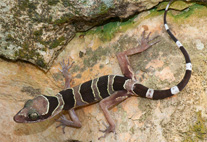Abstract
Containing more than a hundred species, the Chrysis ignita species group is the largest and one of the most taxonomically challenging groups in its genus. It has not been possible to resolve the taxonomy of the group using traditional methods due to the lack of robust diagnostic morphological characters. Here we present the results of a molecular analysis designed to delimit species in the Chrysis ignita group for the first time; using mitochondrial sequence data for 364 in-group specimens consisting of all 18 species known to occur in Northern Europe. Two mitochondrial loci were analysed: a COI gene fragment, and a continuous DNA sequence consisting of 16S rRNA, tRNAVal, 12S rRNA and ND4. Two approaches were employed for delimiting species: (1) genetic distance analysis based on the standard COI barcode sequences and; (2) phylogenetic analysis of the COI fragment together with rRNA genes. Both analyses yielded trees with similar topology, but support values for nodes were higher using the second approach. Fifteen species were distinguished in all analyses: Chrysis angustula Schenck, 1856, C. brevitarsis Thomson, 1870, C. clarinicollis Linsenmaier, 1951, C. corusca Valkeila, 1971, C. fulgida Linnaeus, 1761, C. ignita (Linnaeus, 1758), C. impressa Schenck, 1856, C. iris Christ, 1791, C. leptomandibularis Niehuis, 2000, C. longula Abeille de Perrin, 1879, C. ruddii Shuckard, 1837, C. schencki Linsenmaier, 1968, C. subcoriacea Linsenmaier, 1959, C. terminata Dahlbom, 1854 and C. vanlithi Linsenmaier, 1959. The specific status of C. mediata Linsenmaier, 1951 and C. solida Haupt, 1957 was not resolved. Included unidentified specimens grouped in three clusters, two of which are distinctly delimited and apparently represent cryptic species. The specific status of the unidentified samples in the third cluster remained unclear. Moreover, our data suggest the existence of additional cryptic species currently lumped under the names C. pseudobrevitarsis Linsenmaier, 1951 and C. schencki Linsenmaier, 1968. In conclusion, our results derived from analysis of mitochondrial loci strongly support the specific status of the majority of currently recognised species in the Chrysis ignita species group, and suggest the existence of additional cryptic species in Northern Europe. Thus, considering the difficulties that often arise during species determination based on morphological characters, the mtDNA loci used here appear highly suitable for assisting species delimitation in this group as well as identification of specimens.

